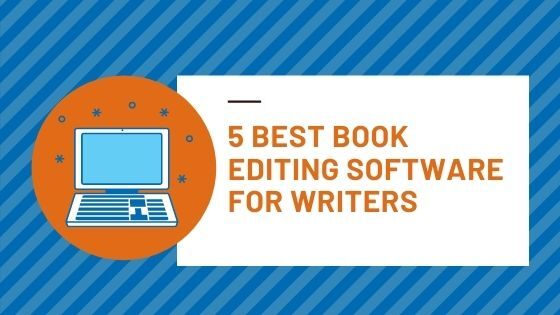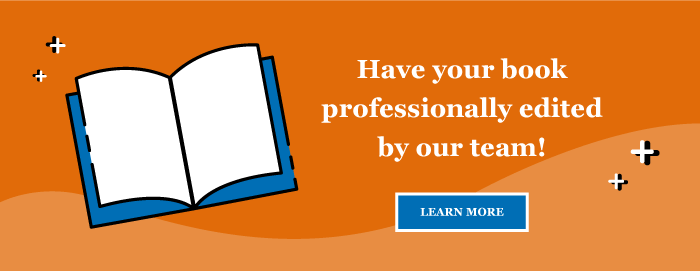You’ve written your magnum opus, a gargantuan effort that required months of dedication and hard work. Even with all you have accomplished prior to this point in your self-publishing journey, your work is, unfortunately, far from over.
Ahead lies the tedious task of editing and proofreading your manuscript. The savvy writer knows to check his or her ego at the door and not attempt to undertake this job. Why? Because most likely, when reading through your document in search of typos and grammatical errors, your eyes will leap-frog right over even the most glaring mistakes. Deny this at your own peril because the last thing you want is to publish a book containing numerous flaws.
Instead, consider your two editing helpmates: 1) hiring an editor to clean up and polish the manuscript, or 2) investing in a book editing software program.
Between the two options, a living, breathing editor remains the preferred option, as no software tool can replace an actual editor’s skills. However, if cost is a primary concern, a free book editing software program can offer a decent overhaul of your book. Additionally, a modestly priced paid book editing software program will have several extra editing features. Consider these instances when you would need editing software:
- When hiring an editor and proofreader is outside your budget.
- For cleaning up your manuscript prior to sending it over to a human editor
- To help identify and correct problems throughout the writing process.
Now that we have established the usefulness of these software programs let’s review some of the pros and cons of manuscript-editing software.
Best Book Editing Software to Edit as You Write
There is a wide array of free book editing software programs from which to choose. Each of these programs has some pros and cons to consider before making your selection. The following are some of the best book editing software tools for writers:
After the Deadline
This editing program checks spelling, style, and grammar.
- Pros: Focuses on context, offers explanations for needed changes, conducts stylistic analysis, and is free
- Cons: Must be online to use it
AutoCrit
This editing tool checks for a wide range of possible improvements, such as repetitive words and phrases, word choice, grammar, pacing, and more.
- Pros: Offers genre-based suggestions, encourages better writing, compares your book to works of published authors, well suited for novelists, uses a clean layout, can analyze an entire manuscript, and has a limited version for free
- Cons: Pricey for the full spectrum of features, not as accurate as Grammarly
Hemmingway Editor
This is a word processor that includes an editing mode. The editing function color-codes such problems as adverb use, passive voice, and sentence word counts.
- Pros: The app is free, easy to use
- Cons: Doesn’t check for plagiarism or grammar
ProWritingAid
This is an editing tool that can be paired with other book writing software programs. It edits spelling and grammar, offers style suggestions and other writing insights to improve the manuscript.
- Pros: Comprehensive editor that helps you improve sentence structure, vocabulary, and style, and can create detailed reports
- Cons: Free edition is very limited, so a subscription is recommended
Grammarly
This robust editing software program focuses mainly on grammar and spelling errors, although it also offers an advanced version with more features. It can be used to edit many documents across the web through a Chrome extension.
- Pros: Very accurate, has settings for various types of writing projects and offers a basic free version for spelling and grammar edits only.
- Cons: Not able to edit an entire manuscript at once
Shortcomings of Editing Software
Telling a great story certainly doesn’t hinge on using a book editing software tool. They may provide some help in tuning up your manuscript as you work on it, but they are not infallible. Therefore, book editing software programs should be used judiciously. They can provide a general overview of a document, such as catching typos and repetitive phrases in a blog post or a white paper, for example. But for a book, you hope to have published, not so much.
For a deep dive into editing a book manuscript, it is always prudent to access the help of human editors and proofreaders. Even beta readers can review the manuscript and offer valuable feedback and suggestions addressing flow, plotline, inconsistencies, and such. Editors and proofreaders have an advantage over computer software editing tools. These professionals are versed in the nuances of the language and can spot inconsistent terminology or other word usage issues that A.I. can miss.
Skipping an editor’s services risks publishing a book that contains errors, something that can undermine an author’s credibility. An editor does the hard lifting, helping the author prepare the book for publishing by polishing it up, and creating a professional product.
Is Professional Book Editing Your Next Step?
Even the best editing software programs for writers cannot replace a professional book editor’s valuable input. If you use a book editing software tool for the initial drafts of your manuscript, you should note that these software programs are not perfect. The team at Gatekeeper Press can use their years of editing expertise to take your book manuscript to the next level. Contact us today!


